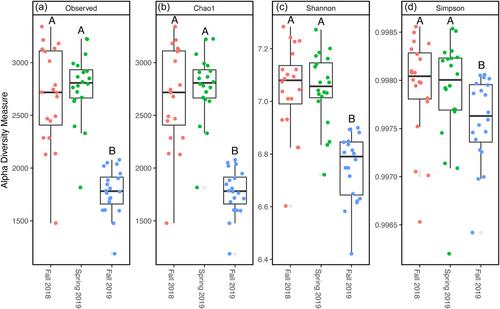Soils worldwide are degrading, raising concerns about our ability to feed the growing global population. Soil amendments that can alleviate degradation are gaining attention. The application of sediments dredged from waterways to agricultural fields has increasing promise as a means for improving degraded soils. However, herbaceous plant species may have difficulty establishing on dredged material because of low nutrient availability, inhibitory levels of toxins, unsuitable moisture conditions and lack of microorganisms capable of ameliorating these characteristics. To counteract these issues, we sought to understand if the use of a cover crop would increase the abundance, diversity and function of beneficial soil microorganisms compared to harmful microorganisms in dredged sediments.
We collected soil samples from two 100% dredged sediment plots, one where winter cereal rye (Secale cereal) was grown as a winter cover crop and one left fallow over the winter, followed by traditional corn (Zea mays) planting. We sampled both plots three times during the growing season: before cover crop application, following cover crop application but before corn planting and following final corn harvest. We then used high-throughput sequencing to identify the bacterial and fungal communities present in the samples.
Our data show that cover crop application did not alter the microbial community in these plots. However, sampling time decreased species diversity and altered the composition of both fungal and bacterial communities recovered from these plots. Across both plots, microorganisms associated with carbon cycling were more abundant than those associated with harmful effects, including microcystin-producing cyanobacteria, which were an extremely small portion of the overall community.
Our work suggests that dredged sediments have the potential to improve soil function through the addition of microorganisms associated with nutrient cycling, but a cover crop is not necessary to incur these benefits.


